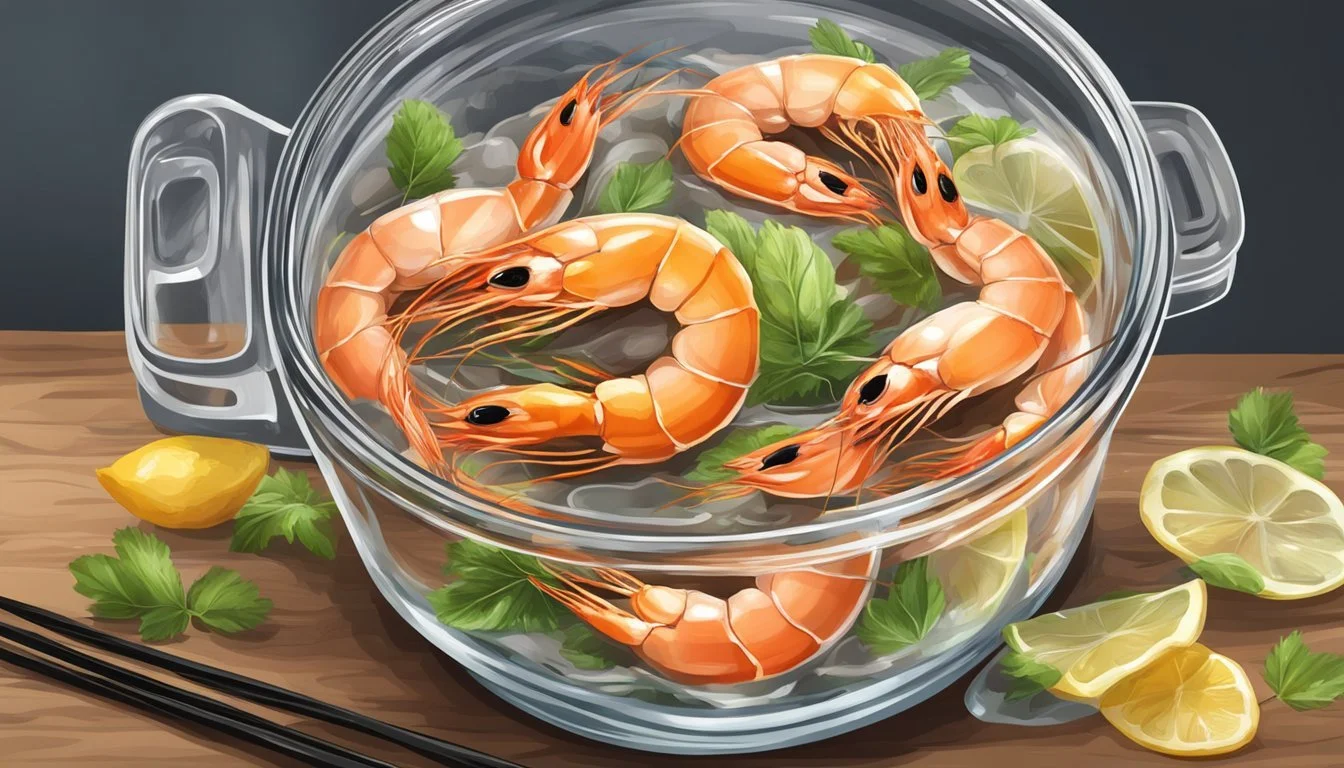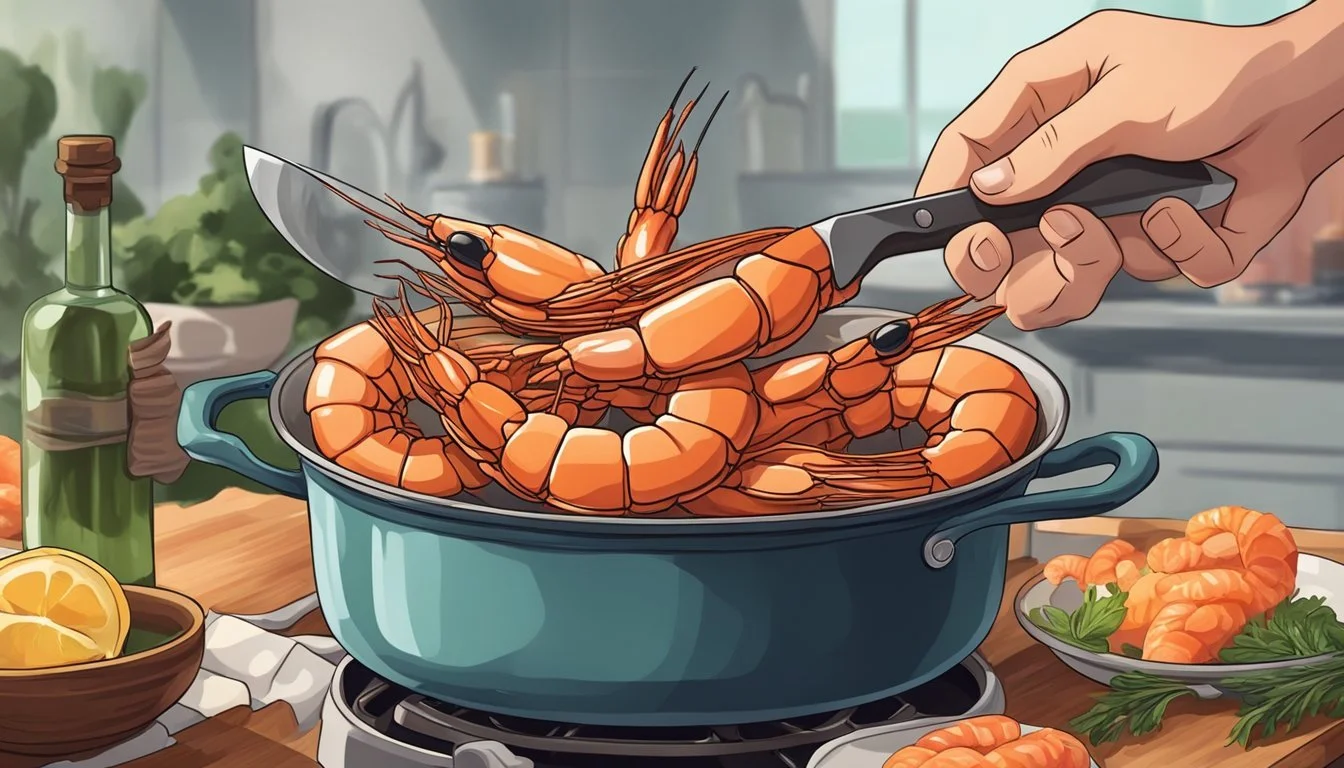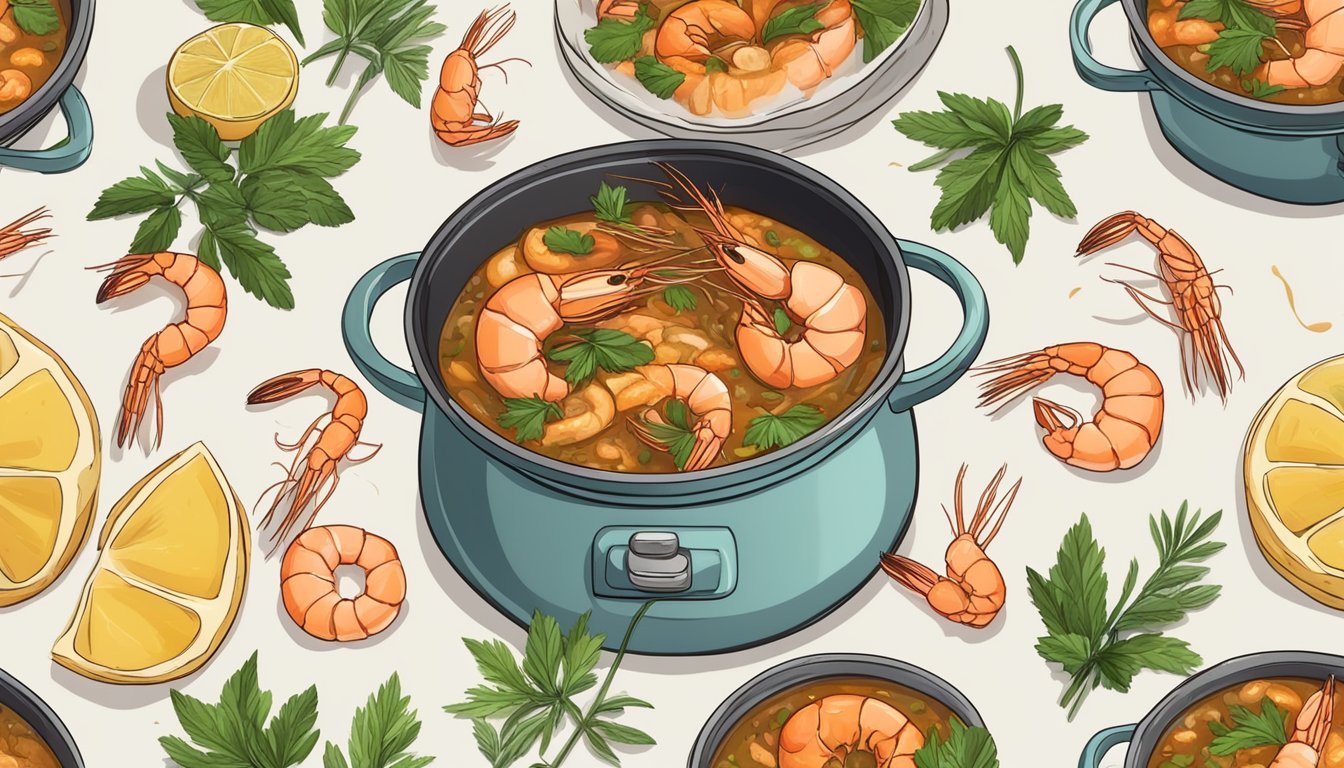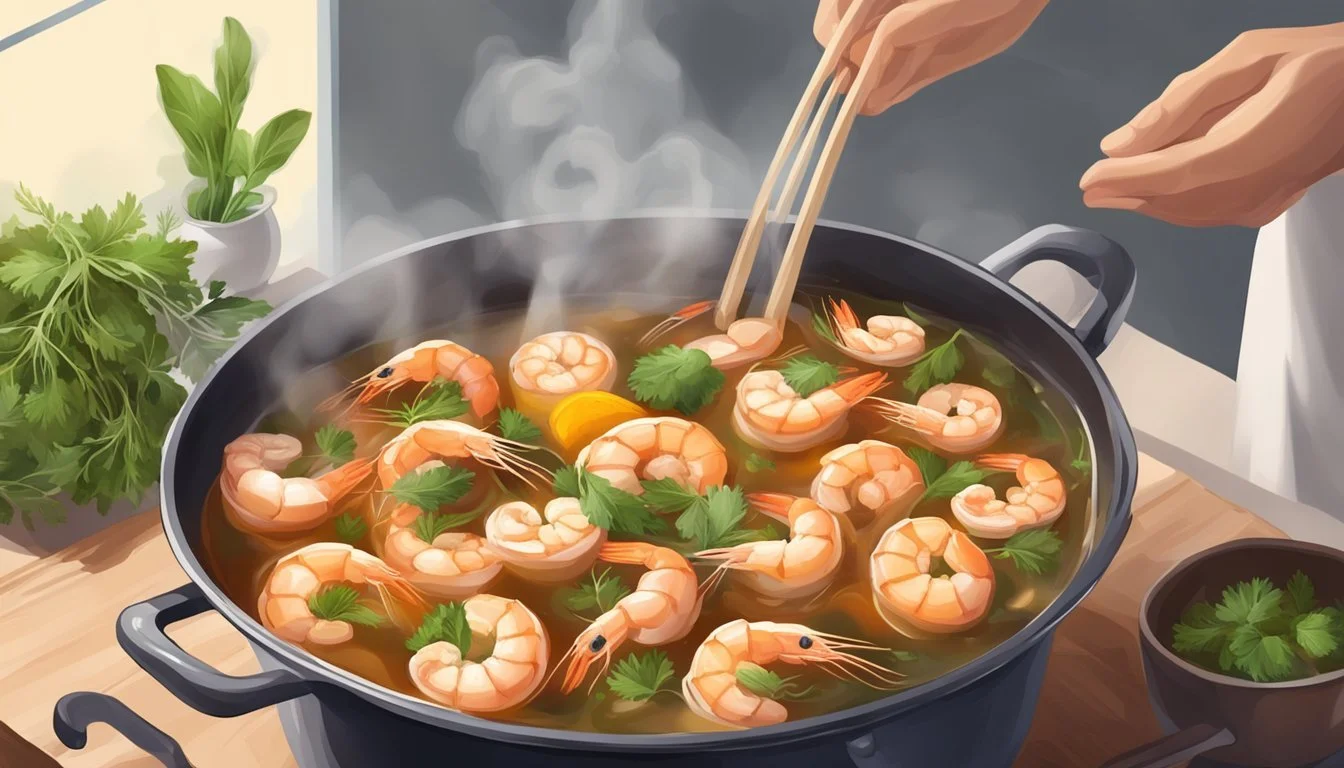How to Make Flavorful Shrimp Head Oil for Cooking
Unlocking Rich Seafood Aromas
Shrimp (What wine goes well with shrimp?) head oil is an exquisite ingredient that brings the essence of the ocean to various culinary creations. This flavorful oil infuses dishes with the rich taste of shrimp, enhancing the overall dining experience. It is made by rendering the fats and juices from shrimp heads, which are often discarded, despite being packed with flavor. Cooks around the world value this oil for its ability to add depth and complexity to their cooking, finding that it pairs exceptionally well with seafood pastas, risottos, and Asian cuisines.
Creating shrimp head oil at home is a straightforward process that requires minimal ingredients yet yields a product that significantly elevates home-cooked meals. The technique involves gently heating the shrimp heads in oil, allowing the natural flavors to infuse the oil without overpowering it. As sustainability in cooking becomes more prevalent, utilizing shrimp heads for their oil not only contributes to waste reduction but also offers home chefs an opportunity to explore new flavors.
The process is as much about technique as it is about the quality of the ingredients. Selecting fresh shrimp with intact heads is vital, as this ensures a potent flavor base. By applying the right amount of heat and time, the shrimp heads impart their unique taste to the oil, creating an aromatic and versatile cooking medium. This culinary secret is a testament to the practice of using all parts of an ingredient, unlocking a spectrum of flavors that might otherwise go unnoticed.
Selecting the Best Shrimp
An essential step in creating flavorful shrimp head oil is choosing the right shrimp. The selection process will impact the quality and taste of your oil, so understanding the difference between fresh and frozen options and how to identify high-quality head-on shrimp is crucial.
Fresh Vs. Frozen Shrimp
Fresh Shrimp:
Availability: They are often available near coastal regions and should be purchased as close to the catch date as possible.
Texture and Flavor: Fresh shrimp typically offer superior texture and a more pronounced flavor, which is especially important for infusing oils.
Frozen Shrimp:
Convenience: Frozen shrimp can be a practical choice, as they are widely available and can be stored for a more extended period.
Quality Preservation: Freezing shrimp can lock in flavor if flash-frozen properly. Look for shrimp that is individually quick frozen (IQF) to ensure peak freshness.
Identifying Quality Head-on Shrimp
Visual Inspection:
Translucency: Shrimp should have a semi-transparent appearance signifying freshness.
Firmness: They should feel firm to the touch, with no signs of sliminess or mushiness.
Storage and Handling:
Shrimp should be stored on ice at the retailer and should not emit any ammonia-like odors.
Ensure the heads are intact and not discolored, which can indicate spoilage.
Size and Origin:
The size of the shrimp can affect the yield of oil. Larger shrimp tend to have more substantial heads, thus more flavor for the oil.
Knowing the shrimp's origin can provide insights into their quality. Shrimp sourced from reputable fisheries tends to adhere to higher standards.
Selecting the right shrimp, whether fresh or frozen, greatly influences the final outcome of your shrimp head oil. Shoppers should be attentive to the shrimp's appearance, feel, and storage conditions to select the highest quality for their culinary needs.
Preparation of Shrimp
Careful preparation of shrimp is essential for the successful creation of shrimp head oil. The flavor and texture of the oil are greatly influenced by the quality of the shrimp before they undergo the oil extraction process.
Cleaning and Deveining
To clean shrimp, one begins by running them under cold water, ensuring any dirt or sediment is washed away. Deveining shrimp is a precise task that involves making a shallow cut along the back of the shrimp to expose the digestive tract, which is then carefully removed. This process not only improves the appearance and texture of the shrimp but also eliminates any bitterness that may affect the flavor profile of the oil.
Removing Shrimp Heads
For head on shrimp, the heads need to be detached from the bodies with care to not damage the rest of the shrimp. Shrimp heads are rich in flavor and are the key ingredient in preparing richly flavored oil. To remove them, one should hold the body of the shrimp in one hand, gently twist the head with the other, and pull it off cleanly.
Marinating Shrimp
In preparation for making shrimp head oil, marinating the shrimp bodies can infuse additional flavors. A straightforward marinade can consist of ingredients such as garlic, lemon juice, and parsley. It is important to marinate the shrimp for an adequate period, typically 15-30 minutes, to ensure that the flavors penetrate well without compromising the shrimp's delicate texture.
Shrimp that are well-prepared serve as a pristine foundation for shrimp head oil, imparting a depth of flavor to the final product.
Making Shrimp Head Oil
Shrimp head oil is a secret weapon in the kitchen for adding a burst of umami-rich seafood flavor to dishes. This section outlines the ingredients required, the method of cooking, and the best practices for storage to maintain its quality.
Ingredients for Shrimp Head Oil
Shrimp Heads: Reserve the heads from your shrimp. They are packed with flavor and will form the base of your oil.
Olive Oil: Known for its health benefits and mild taste, olive oil is an excellent carrier for the shrimp flavor.
Garlic: A few cloves of garlic can add a subtle depth to the oil.
Spices: Personal choice can dictate the addition of spices; options include peppercorns or bay leaves.
Cooking Process for Shrimp Head Oil
Preparation: Begin by removing any excess matter from the shrimp heads. Rinse lightly if needed.
Cooking:
Heat the olive oil in a pot or large pan over medium heat.
Add the cleaned shrimp heads once the oil is warm. Sauté until they turn pink.
Include the garlic into the oil along with any other chosen spices, and allow the mix to fry gently.
The texture should be closely monitored to avoid burning, ensuring the shrimp heads are well caramelized.
Straining: Once the shrimp heads are sufficiently cooked, strain the oil through a fine-mesh sieve to remove any solids, pressing to extract as much flavor as possible.
Storing and Shelf Life
Cooling: Allow the oil to cool to room temperature before storage.
Storage:
Store in a clean, airtight container.
Keep the oil in the refrigerator to extend its shelf life.
Shelf Life: Properly stored shrimp head oil can last for up to a month in the refrigerator, retaining its robust flavor and aroma.
Using Shrimp Head Oil in Dishes
Shrimp head oil infuses dishes with a distinctive, rich flavor, elevating everyday recipes with the essence of the sea. Here's how to incorporate this aromatic oil into a variety of dishes.
Pasta Dishes Featuring Shrimp Head Oil
When crafting a pasta dish, the robust flavor of shrimp head oil can serve as a perfect substitute for traditional olive oil. To make an unforgettable pasta:
Begin by sautéing garlic and onion in the shrimp head oil until aromatic.
Deglaze the pan with white wine and reduce to concentrate the flavors.
Toss al dente pasta with the mixture and finish with fresh herbs and a dusting of grated Parmesan.
Pasta becomes a flavorful dish underpinned by the nuanced undertones of shrimp head oil.
Enhancing Salads with Shrimp Head Oil
A simple salad can be transformed into a flavorful dish by using shrimp head oil in the dressing. Here's a quick salad dressing recipe:
Whisk together 2 parts shrimp head oil and 1 part lemon juice or vinegar.
Season with salt, pepper, and a touch of honey to balance the acidity.
Drizzle over mixed greens, adding in fresh seafood such as shrimp or scallops.
This dressing combines the freshness of salads with the depth of shrimp head oil.
Versatile Applications in Various Recipes
The use of shrimp head oil isn't limited to simply pasta and salads; its versatility extends across multiple cooking methods. Some applications include:
A marinade for seafood or poultry, imparting a savory depth.
A finishing oil for risottos and soups, lending a note of complexity.
Incorporated into mayonnaise or aioli to create a unique spread for sandwiches.
One must not underestimate the potency of shrimp head oil; a small amount goes a long way in accentuating the flavors of a dish.
Cooking Techniques for Shrimp
Selecting the right cooking technique is essential for enhancing shrimp's natural flavor and achieving the optimal texture. Different methods such as sautéing, grilling, and steaming or boiling can yield uniquely succulent and tender results when applied thoughtfully.
Sautéing with Shrimp Head Oil
Sautéing shrimp in shrimp head oil infuses the dish with intense flavor. To sauté shrimp:
Preheat the skillet over medium-high heat.
Add shrimp head oil to the hot skillet.
Cook the shrimp for 2-3 minutes per side until they turn pink and no longer translucent.
Using shrimp head oil imparts a deep seafood essence, enhancing the shrimp's tenderness without overpowering its natural taste.
Grilling
Grilling imparts a smoky flavor to the shrimp and often involves higher heat. For grilling shrimp:
Preheat the grill to medium-high heat.
Place the shrimp directly on the grill grate.
Grill for 2-3 minutes per side until they achieve a pink and slightly charred exterior.
Shrimp should be monitored closely due to the high heat, ensuring they remain tender and do not become rubbery.
Steaming and Boiling
Steaming and boiling are gentle cooking methods suited for preserving shrimp's delicate texture. To steam or boil shrimp:
Fill a pot with water (and aromatic herbs if desired) for boiling, or with water and a steamer basket for steaming.
Bring the water to a boil, or wait until steam is produced for steaming.
Cook the shrimp for 2-3 minutes. Shrimp are ready once they are pink and opaque.
This method thoroughly cooks shrimp without the need for added fats, making it a healthier option yet preserving the shrimp's tenderness.
Pairing and Presentation
When preparing dishes with shrimp head oil, one should consider both the visual appeal and the harmony of flavors. The addition of thoughtful garnishes and the selection of side dishes that complement the distinct taste of shrimp can elevate the meal experience.
Garnishes for Enhanced Visual Appeal
One can enhance the dish's aesthetics by carefully selecting garnishes that add color and texture. A sprinkle of chopped parsley or a few strands of chive can introduce a vibrant green that contrasts well with the shrimp's pink hue. A light drizzle of lemon juice just before serving not only brightens flavor but also adds a fresh visual element with its bright yellow color.
Side Dishes that Complement Shrimp
Choosing the right side dish is crucial for a balanced meal:
Vegetables: Steamed asparagus or sautéed green beans provide a crisp texture and a clean flavor that pairs splendidly with the rich shrimp.
Herbs and spices: Incorporating herbs such as dill or spices like paprika into side dishes can mirror the flavor profiles found within the shrimp head oil.
Starches: Garlic mashed potatoes or a pilaf rice can serve as a neutral base to allow the shrimp's flavor to stand out, making for a harmonious plate.
Presentation and pairing are central to creating a memorable shrimp dish that delights both the palate and the eye.
Seasonings and Flavorings
The success of shrimp head oil hinges largely on the use of seasonings and flavorings to bring out the shrimp's natural taste. The right blend of salt, herbs, and spices can transform this ingredient into a versatile culinary asset.
Simple Seasoning Techniques
One begins with salt and pepper, the foundational elements of seasoning that enhance the natural flavor profile of shrimp. To make shrimp head oil, a cook should season the heads lightly with salt to draw out moisture and concentrate flavors. Freshly ground black pepper can be added to introduce a subtle heat and complexity.
Seasoning Quantity Purpose Salt to taste Enhance natural flavors Black Pepper to taste Add heat and depth of flavor Lemon Juice a few squeezes Provide a bright, acidic note
Creating Signature Flavors with Herbs and Spices
For chefs looking to add a signature touch to their shrimp head oil, incorporating a melange of herbs and spices offers endless possibilities. Aromatic herbs like thyme or rosemary infuse the oil with fragrant notes, while spices such as paprika can impart a mild sweetness and vibrant color.
Herbs/Spices Quantity Usage Thyme 1-2 sprigs Infuse oil with a woodsy aroma Rosemary 1-2 sprigs Add a pine-like fragrance Paprika ½ tsp Offer sweetness and color Lemon Zest from 1 lemon Introduce a zesty, citrus flavor
A cook may choose to add lemon juice or zest to the oil for a citrus note that cuts through the richness, creating a balance and enhancing other flavors within the dish.
Applying these simple techniques and signature flavors during the preparation of shrimp head oil elevates its taste and appeals, allowing it to serve as a culinary highlight in various dishes.
Serving Suggestions
Shrimp head oil adds a rich, oceanic depth to dishes. By using this flavorful oil, one elevates the taste profiles of seafood recipes, enhancing their natural flavors.
Shrimp as the Main Course
When shrimp head oil is used in main courses, it should be integrated thoughtfully to complement the shrimp's delicate taste. For pasta dishes, adding a few tablespoons of shrimp head oil can imbue the noodles with a subtle seafood essence. This works especially well in aglio e olio or shrimp scampi (What wine goes well with shrimp scampi?), where olive oil is a base ingredient.
Recipe Suggestion:
Shrimp Scampi: Toss al dente pasta with shrimp head oil, sautéed shrimp, garlic, and a squeeze of fresh lime juice.
Incorporating Shrimp into Appetizers and Salads
The robust flavor of shrimp head oil is particularly suited for appetizers and salads, where it can act as a dressing or a drizzle.
Appetizers:
Shrimp Cocktail: (What wine goes well with shrimp cocktail?) Serve classic chilled shrimp with a cocktail sauce infused with a teaspoon of shrimp head oil for an enhanced taste.
Salads:
Shrimp Salad: A bright, citrusy shrimp salad gains complexity from shrimp head oil. Dress mixed greens, avocado, and chilled, cooked shrimp with a vinaigrette made from shrimp head oil and lime zest.
For tacos, shrimp head oil can be used to marinate the shrimp before cooking, imparting a savory intensity that pairs well with fresh toppings and soft tortillas.
In each application, shrimp head oil acts as a flavor boost, ensuring that the shrimp remains the star of the dish.
Safety and Health Considerations
When preparing shrimp head oil, it is crucial to prioritize safety and health to ensure the resulting oil is both edible and safe to use. Here are key considerations to keep in mind:
Procurement and Cleanliness:
Purchase shrimp from reputable sources to avoid contaminated seafood.
Ensure the shrimp heads are thoroughly cleaned before use as residual bacteria can spoil the oil.
Cooking Process:
Cook at the appropriate temperatures to reduce the risk of foodborne illnesses.
Avoid overcooking, which can diminish the beneficial properties and flavor of the oil.
Allergen Information:
Shrimp is a common allergen. Always label shrimp head oil and inform others of its presence in cooked dishes.
Storage:
Store the oil in a cool, dark place to prevent rancidity.
Use airtight containers to maintain freshness and extend shelf life.
Consumption Advice:
Introduce shrimp head oil gradually into the diet, especially for those who are not accustomed to eating seafood products.
Monitor for adverse reactions, as some individuals may be sensitive to seafood-based oils.
By adhering to these guidelines, one can confidently produce and use shrimp head oil that enhances culinary experiences without compromising health.
Additional Tips and Advice
In creating a superb shrimp head oil, attention to shelf life and a clear understanding of usage policies are crucial for a positive experience.
Increasing Shelf Life of Shrimp and Oil
When preparing shrimp head oil, ensuring the freshness of both the shrimp and the resulting oil is paramount. To increase the shelf life of the oil, one should store it in an airtight container and keep it refrigerated. Ideally, users should aim to use the oil within one week. For the shrimp, one can extend their freshness by storing them properly in the refrigerator or freezer. The user must note that fresh shrimp, especially when used whole with the head on, will impart a more intense flavor to the oil.
Refrigeration: Store the oil below 40°F.
Freezer Storage (if applicable): Shrimp stay fresh when frozen at 0°F.
Airtight Containers: Minimize oxidation and contamination.
Understanding Affiliate Links and Disclosure Policy
When utilizing recipes and advice from online resources, it's important to understand their disclosure policy regarding affiliate links. Websites often include affiliate links that direct users to purchase products used within the cooking experience. A disclosure policy should be visible to inform users that the site may earn commissions from purchases made through these links. This transparency builds trust and ensures users are aware of the website's monetization strategies.









